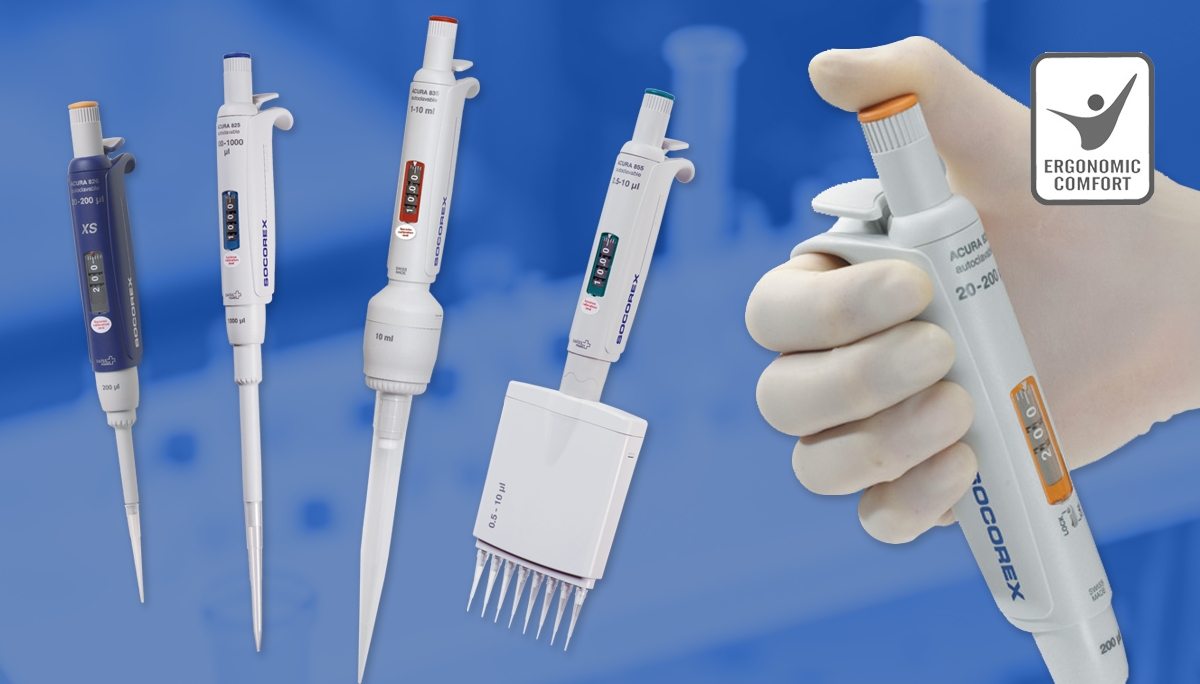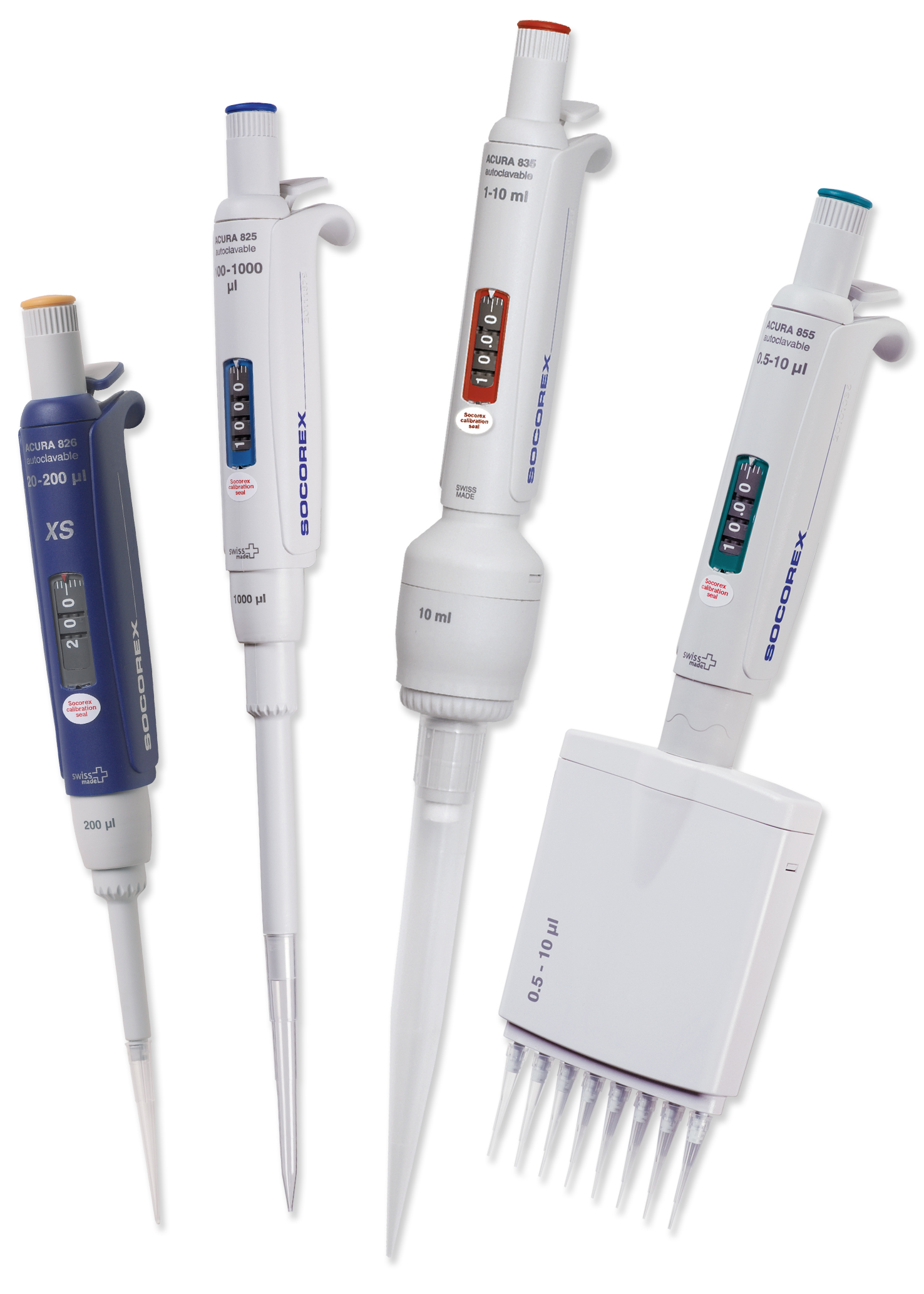Inconsistency when pipetting can cause failure in experimental protocols – this is especially acute when pipetting very small amounts. Any inaccuracy within the pipettes or difficult movements when working with small volumes can cause big problems. Reliable micropipettes with smooth functions and an ergonomic design can greatly reduce these risks to research, and potential strains and pain in researchers.
In this article, we speak with Dr. Pang Kok Lun, a lecturer at Newcastle University Medicine Malaysia, about his research, and how his use of the Socorex Acura® manual micropipettes support this. Socorex micropipettes provide the flexibility to cover small or large volumes and are supplied as single and multi-channel models.
In their research, Kok Lun’s team is working on different cancer-related projects, he explains, “There are two main research projects. The first project is elucidating the molecular mechanisms of tocotrienol (a natural vitamin E isomer) in inducing human breast cancer MCF-7 cell death. The second project is determining the antileukemia properties of tocotrienol on human chronic myeloid leukemia K562 cells.”
Acura® manual micropipettes by Socorex help Dr. Pang Kok Lun’s research, reliably pipetting small volumes while being comfortable for repetitive movements.
Manual pipettes as a laboratory essential
It is important that all procedures for research are fully optimized in order to produce accurate results. This can take time and a lot of repetition in the case of some protocols, and researchers depend on precise equipment to ensure consistency. Reliable pipettes are an essential tool for a laboratory-based researcher.Kok Lun’s team is using a variety of laboratory techniques and methods, “We will mainly emphasize cell-based assay in the early phase of projects, and then progress to the flow cytometry and western blotting analysis in the later stage.”
With many different methods being utilized, it is key that each stage or process is precise, and optimized. Kok Lun’s team still have some steps to develop further, he explains, “The staining procedure requires some optimization to visualize the intracellular organelles perfectly. We use multi-channel micropipettes to facilitate the small volume of liquid transferring.”
Kok Lun’s team has found the Acura® manual micropipettes from Socorex ideal for their research, trusting them when using small volumes, “Most of our in vitro experiment requires the transfer of small amount of liquid, during treatment or staining. Inaccurate or imprecise liquid handling will lead to erroneous data.”
Ergonomic design to protect the user
Optimization of protocols and procedures, and conducting experiments themselves, can require a lot of repetition, including certain movements, which may ultimately cause discomfort or pain. For pipetting at least, this can be overcome by using ergonomic pipettes such as the Acura® manual micropipettes. They are designed for comfort and safety, as well as having volume adjustment for volumes up to 10 mL.
The Acura® manual pipettes are comfortable to use, and this is appreciated by Kok Lun’s team, “From our experience, this micropipette has a user-friendly design. Besides, the plunger is soft, smooth, and responsive. The ejector button is nice to use and ergonomic in design.”
Comfort does not come at the expense of practicality either. As well as being ideal for pipetting small volumes accurately, Kok Lun has other positive experiences of using the pipettes, “What matters most is that this micropipette fits most of the universal micropipette tips. We had a bad experience when we previously used other micropipettes where universal tips did not fit (caused leaking), the plunger movement was jerky or hard, the set volume ran off by itself after handling (imprecision), and even the tip ejector collar could have detached itself when the tips were removed (causing contamination in cell culture). We’ve used them for around four years now, with routine and periodic calibration and cleaning.”
These micropipettes are essential to Kok Lun team's research, as he concludes, “We aim to emphasize molecular aspects and genomic analysis in the future. As in vitro testing is one of our main research directions, a micropipette is a routine and most important research tool. Genomic analysis like RT-PCR also deals with a lot of small volumes of liquid transfer.”
"From our experience, this micropipette is user-friendly with an ergonomic design in handling."
Dr. Pang Kok Lun
Newcastle University Medicine Malaysia




